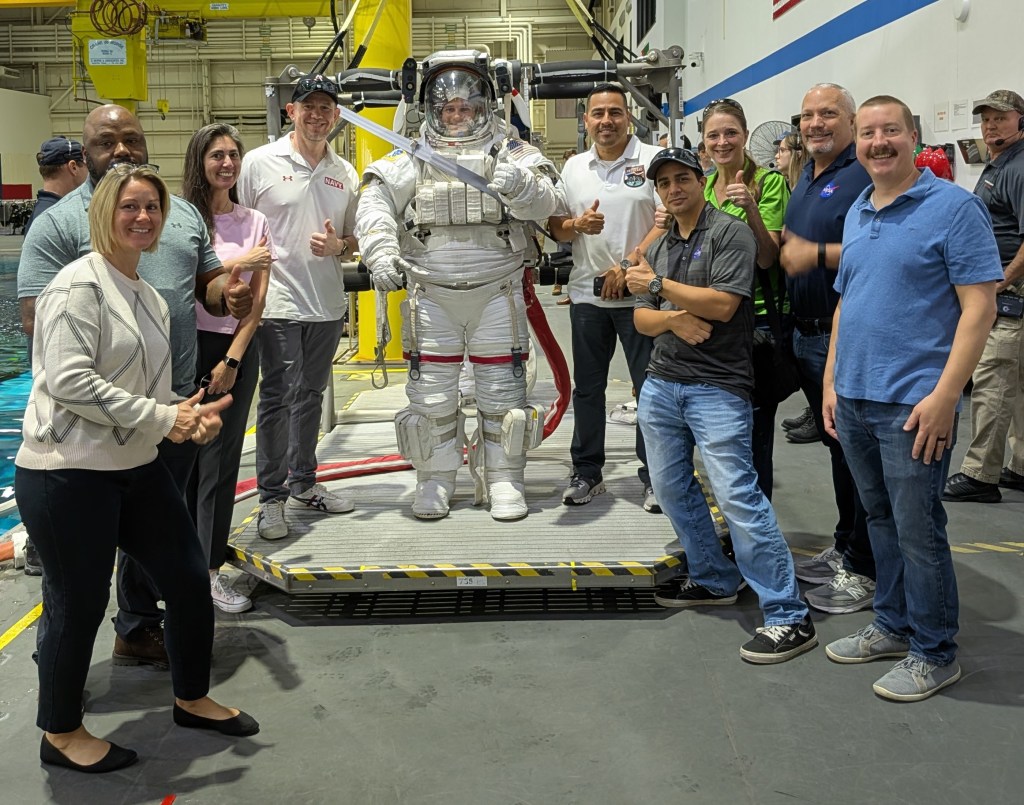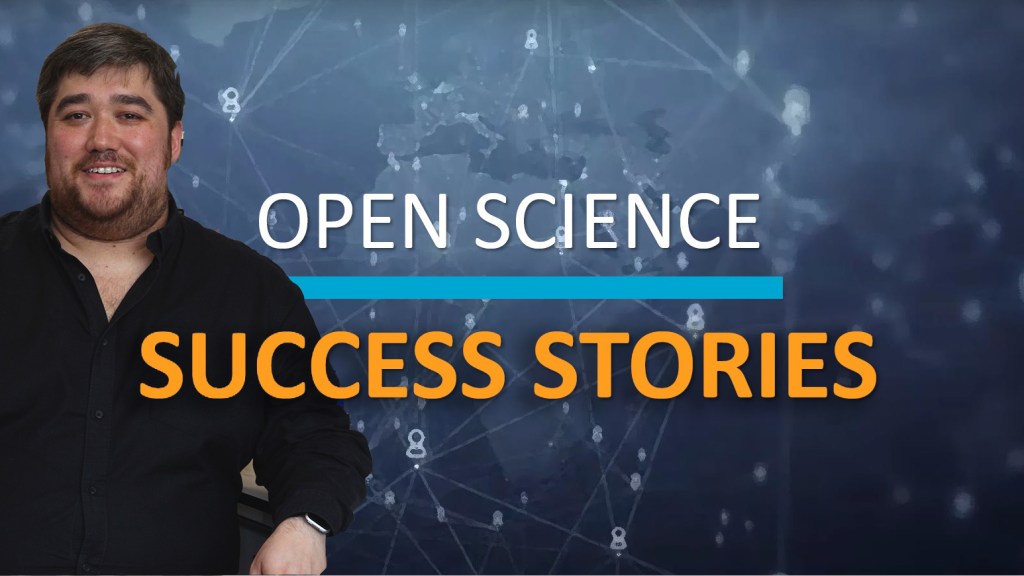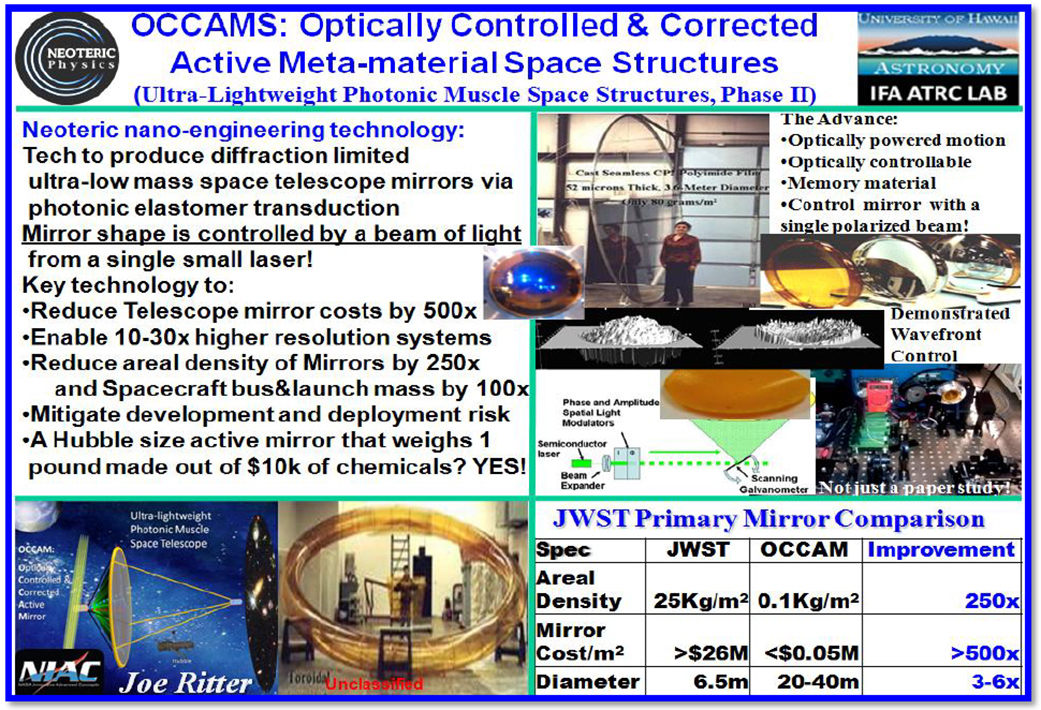Joe Ritter
Neoteric Physics, Inc.
NIAC 2012 Phase II Ritter OCCAMS Final Report
Photons weigh nothing. Why must even small space telescopes have high mass? Our team has demonstrated this is not the case using a completely novel approach to producing and correcting active optical primary mirrors to be used specifically for NASA’s future large space telescope missions. Unprecedented advances in nano-engineered meta-materials have produced a laser actuated liquid crystal elastomer (LCE) polymer substrate with controllable reversible bi-directional bending. Using our novel optically controlled molecular actuators allows substitution of optically induced control for rigidity and mass.
Development of optics for space telescopes has traditionally been one of the most risky and costly facets of astronomy missions. The advancement of science is a function of the tools at hand. The level of tools is based on materials available. Nano-engineered meta-materials stand today as semiconductors did 50 years ago ready to transform our knowledge of the cosmos.
Active meta-material Photonic Muscle substrates can make precision control of relatively inexpensive giant apertures possible by precisely controlling membrane mirror shape and dynamics with a low power beam of light. The key innovation here is incorporating optically addressed photo-initiated distortion of photoactive meta-materials; optically addressable laser powered non-contact molecular actuators become molecular units of the mirror itself. A single low power laser is used for occasional mirror figure refresh of an active primary membrane mirror utilizing 10^23 nanomachine “laser controlled molecular actuators” eliminating need for conventional figure control actuators providing enormous cost, mass and areal density reduction.
In Hawaiian Maikalani means, “Knowledge we gain from the cosmos.” Missions like Hubble have changed our world view. Last year’s Nobel prize in physics was a result of astronomical discoveries. JWST is posed to rewrite the physics texts. Here we request funding to advance our neoteric meta-material technology to enable a factor of 100 reduction in areal density, a factor of 100 reduction in telescope costs, a leap to enable missions to image the cosmos in unprecedented detail, with the associated gain in knowledge. Phase II funding is requested to continue towards a proof of concept at the diffraction limit. Ritter’s “Photonic Muscle” substrates finally make precision control of giant ultra light-weight mirror apertures possible. This concept will be refined and further demonstrated in the proposed phase II which leverages Phase I meta-material development efforts and over a decade of research.
This novel innovative advanced technology will enable innovative missions for imaging the cosmos, resolving spectral and spatial details of exosolar planets and searching for life, including evidence of Earth’s origins, while substantially reducing mass, launch and fabrication costs for space telescopy. We seek an interim goal within 10 years of a Hubble size (2.4m) primary mirror weighing 1 pound at a cost of 10K in materials. The mandrel would be reusable for mass production, and the control system is on the order of $20K of off the shelf components (for a ground test version). The potential cost savings are revolutionary. Inexpensive 6 meter class telescopes are a near term goal which would revive missions like the Space interferometry mission and save taxpayers $billions while relieving NASA budget issues.
The intrinsic value of this technology, potential scientific impact, vast cost savings and programmatic risk reduction with related program benefits and cost vs. performance value all become apparent in this proposal which we hope you will fund. This bold novel technology represents a fundamental shift in possibility, and a removal of current barriers to knowledge we can gain from the cosmos.





























